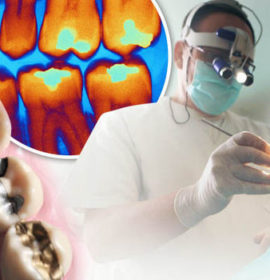
Gum problems and oral health
Uncategorized
Are you aware of gum problems and there signs
Here are some signs of gum problems:
Gums that are red or puffy or bleed when you brush or floss. These are early forms of gum problems. They can usually be treated with good oral care.

Tooth pain or sensitivity: Gums that have pulled away from the teeth can make teeth sensitive to hot or cold foods or drinks.
Persistent bad breath: Adult teeth that are loose or develop gaps; changes in the way your teeth fit when you bite down. This is the most serious form of gum problems, called periodontitis.
Quick facts about gum problems
- Gum problem is an infection that can affect gums and the surrounding bone.
- Gum problems start when germs in dental plaque cause gums to become red and puffy, and sometimes bleed.
- You can help prevent gum problems by brushing and flossing your teeth twice a day.
- Many people don’t know they have gum problems. That’s why it’s important to see your dental team regularly.
Here are some tips to help prevent gum problems and periodontal disease:
- Brush teeth and gums. Floss between teeth. Pay special attention to your back teeth. They are likely to have more plaque on them because they are hard to reach.
- Change your toothbrush every 3 months. Bristles that are worn remove less dental plaque.
- If your gums bleed, don’t stop brushing and flossing your teeth. Use a toothbrush with soft bristles so you don’t hurt your gums.
- Visit your dental team regularly for teeth cleanings and checkups. Tell your dental team if you are pregnant or have diabetes. These conditions make it harder for the body to fight gum problems.
- Check your gums in the mirror often. Look for changes in color or texture. If you think you have gum problems, see your dental team.





